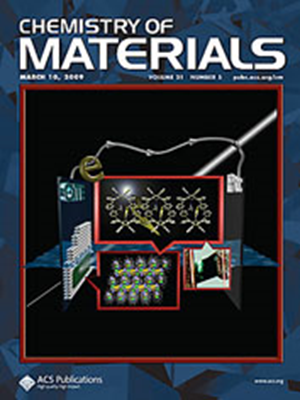Driving Thermoelectric Optimization in AgSbTe2 via Design of Experiments and Machine Learning
IF 7.2
2区 材料科学
Q2 CHEMISTRY, PHYSICAL
引用次数: 0
Abstract
Systemic optimization of thermoelectric materials is arduous due to their conflicting electrical and thermal properties. A strategy based on Design of Experiments and machine learning is developed to optimize the thermoelectric efficiency of AgSb1+xTe2+y, an established thermoelectric. From eight experiments, high thermoelectric performance in AgSb1.021Te2.04 is revealed with a peak and average thermoelectric figure of merit of 1.61 ± 0.24 at 600 K and 1.18 ± 0.18 (300–623 K), respectively, which is >30% higher than the best literature values for AgSb1+xTe2+y. Ag deficiency and suppression of secondary phases in AgSb1.021Te2.04 improve the electrical properties and reduce the thermal conductivity (∼0.4 W m–1 K–1). Our strategy is implemented into an open-source graphical user interface, and it can be used to optimize the methodologies, properties, and processes across different scientific fields.

求助全文
约1分钟内获得全文
求助全文
来源期刊

Chemistry of Materials
工程技术-材料科学:综合
CiteScore
14.10
自引率
5.80%
发文量
929
审稿时长
1.5 months
期刊介绍:
The journal Chemistry of Materials focuses on publishing original research at the intersection of materials science and chemistry. The studies published in the journal involve chemistry as a prominent component and explore topics such as the design, synthesis, characterization, processing, understanding, and application of functional or potentially functional materials. The journal covers various areas of interest, including inorganic and organic solid-state chemistry, nanomaterials, biomaterials, thin films and polymers, and composite/hybrid materials. The journal particularly seeks papers that highlight the creation or development of innovative materials with novel optical, electrical, magnetic, catalytic, or mechanical properties. It is essential that manuscripts on these topics have a primary focus on the chemistry of materials and represent a significant advancement compared to prior research. Before external reviews are sought, submitted manuscripts undergo a review process by a minimum of two editors to ensure their appropriateness for the journal and the presence of sufficient evidence of a significant advance that will be of broad interest to the materials chemistry community.
 求助内容:
求助内容: 应助结果提醒方式:
应助结果提醒方式:


